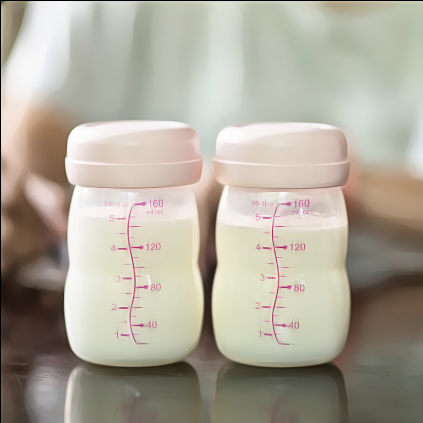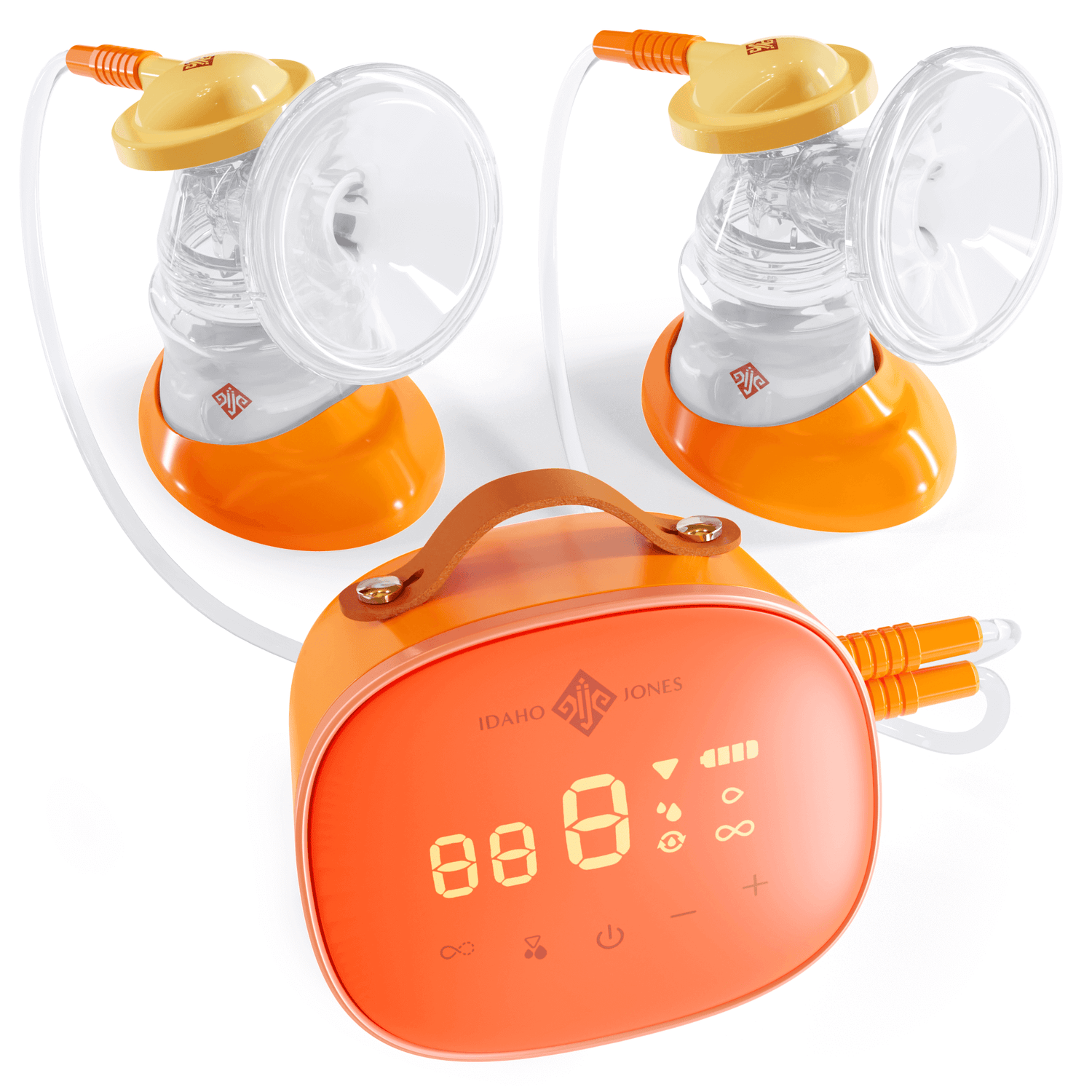
Exclusive Pumping Schedule to Increase Milk Supply
Share
Mothers who find themselves exclusively pumping, for whatever reason, not only have to make time throughout the day and night to pump their breastmilk, they then must devote multiple hours around the clock for the most important thing: feeding and cuddling with their babies. Then there’s the washing up of bottles and pump parts! It’s no wonder that moms who exclusively pump are looking for tips and tricks to increase their milk supply so they can pump more milk, more effectively. Here’s how you can increase your milk supply while exclusively pumping.
First, start with the right equipment. Yes, you can express milk quite successfully using just your fingers and a cup or using a manual or electric single sided breast pump, but these methods on their own are not sustainable for the exclusively pumping mother for a number of reasons, beginning with maternal fatigue. These methods are time consuming, labor intensive, and exhausting. While hand expression and a manual or single sided pump can be part of an effective pumping regimen, an exclusively pumping mother will need a high quality double electric breast pump with attachments or a bra to allow for hands free pumping.
Next, check your breast shield or flange fit. The fit should be comfortable and not pinch or cause painful friction as the nipple is drawn into the flange. There should be some breathing room around the nipple as it is drawn in and areaolar tissue should not be suctioned into the flange along with the nipple. If pumping is painful, if your nipple is filling the circumference of the flange, if pumping sessions leave white or red stripes on your nipples, or leave you with areas of the breast still full of milk, consider changing flange size. Contact your breast pump retailer or a lactation consultant for more information. Once you have the right pump and correctly fitted parts, you’re good to go. You can safely pump at an effective suction level. Start by turning the pressure up to where it becomes uncomfortable and then dial it back a bit from there. That’s how you find the sweet spot. Remember, there is nothing to gain from turning the suction setting up too high and injuring sensitive breast and nipple tissue.
Now add in sensory experience. Breastfeeding is a full body experience that involves all the senses to help get the milk flowing. Exclusively pumping mothers can benefit from setting the stage before beginning a pumping session. If your baby can’t be near you because of a hospitalization or because you have returned to work, begin a pumping session by looking at a picture of your baby and thinking of them. Keep your baby’s blanket close and allow yourself to drink in the scent of your baby on it. Use your hands and fingers to massage your breasts prior to pumping to wake your breasts up and help stimulate a milk let down. Babies naturally knead the breasts during feeds to keep the milk flowing and exclusively pumping mothers need to learn to do this for themselves because it’s effective. What’s more, babies don’t suck the milk out in the same way the pump does. Babies also use compression on the breast through their tongue and jaw action to draw the milk out. Mothers can use their hands and fingers on the breast during pumping sessions to simulate the action of the baby and enhance the milk flow.
Have you ever had the experience of hearing your baby cry and suddenly feeling a pins and needles sensation in your breasts and finding your shirt suddenly wet with milk? That’s because our bodies are designed to respond to our babies and provide our milk for them. The pump, not so much! In a way, you are training your body to respond to the pump, the way it naturally would respond to your baby. In the beginning at least, the exclusively pumping mother will need to create a comfortable, relaxing, calm environment in which to pump. Doing so will enhance the milk let down reflex and the milk flow.
All of the above tips and tricks are to improve milk removal, in other words to improve the effectiveness of your pumping sessions. But how can you get your breasts to increase production? For most women, most of the time, the answer is simple—by more and better milk removal. Here’s how it works: More frequent and more thorough milk removal sends a hormonal message to the milk making tissue of the breasts, the alveoli, to produce more milk. And the opposite is true: Less frequent milk removal (pumping) and less effective milk removal (leaving milk undrained in the breasts) sends a hormonal message to the alveoli to slow down production, to make less milk. The exclusively pumping mother who wants to increase her milk supply should try adding in more pumping sessions and/or increasing the length of time per session.
Accepted wisdom among lactation consultants who work with exclusively pumping women is:
- 6-8 pumping sessions per day
- Equaling no less than 120 minutes of pumping per 24 hours and
- Pumping for two minutes after the last drop of milk at each session
Women who want to increase their milk supply should be sure they are pumping no less than the above guidelines. For many women, simply achieving the above guidelines regularly will increase milk production. If you are already pumping at this level and still wish to increase your milk supply, either because your baby is consuming more milk than you can keep up with, or because you want to build up a freezer stash, it is still possible to increase milk removal and thereby increase your supply. For other women who want to increase their milk supply so that they can pump less frequently, that may not be realistic. Less frequent and less effective milk removal will signal the body to slow production. Milk production is essentially a very effective supply and demand feedback system.
Adding a pumping session in the morning hours can help. Most women report their breasts are fullest upon waking. Instead of pumping once before you get up and out of bed and begin your day, try waking a little earlier so you can add a second pumping session. Instead of setting an alarm clock, try this: drink a big glass of water before falling asleep. Bladder pressure will wake you gently and in harmony with your sleep cycle, rather than abruptly tearing you from the deep, restorative sleep new mothers so desperately need. Keep your pump parts on your nightstand and ready to go. Remember that milk keeps fine at room temperature for two hours or longer, so you don’t need to hop out of bed to wash your pump parts until you have pumped twice. Cap off and stash your bottles of pumped milk in an insulated cooler bag by your bed.
Another way to increase your milk supply is through a method known as power pumping. Power pumping can be very effective. A typical power pumping session will look like this:
Pump for twenty minutes, rest for ten. Pump for ten minutes, rest for ten. Pump for ten minutes. That’s an hour of power pumping! For it to work, mothers have to commit to one or more power pumping sessions per day for several consecutive days or even several weeks. Mothers typically will not achieve a result immediately. Think of it like you’re placing your order. (More milk, please!) Be patient, kind to yourself and stay the course.
What else can an exclusively pumping mother do to increase her milk supply?
Try adding lactogenic foods(or galactogogues) to your diet. Around the world, different cultures have different special foods believed to nourish the mother to help her body produce more milk. Many mothers will experience real results by adding lactogenic foods to their diet. Try starting your day with a simple bowl of oatmeal. Yes, oatmeal. It can really help, just don’t use the instant packets, those won’t work. Bake or buy yourself some oatmeal based lactogenic cookies and try sipping a lactogenic herbal tea throughout the day, such as Mother’s Milk Tea. Mother’s Milk Tea and other brands of lactogenic tea are typically brewed from fenugreek seeds along with other herbs. While sipping a tea is a nice way to keep hydrated (sufficient hydration is very important for milk making!) mothers can also take fenugreek in capsule form. Fenugreek has been shown in studies to increase milk production. (Fenugreek in high doses may cause digestive discomforts like nausea and diarrhea. Take only as directed.)
If none of these methods work, there are still steps you can take to increase your milk supply. In some cases, there may be underlying physical causes for low milk supply that should be addressed. You will need to enlist help if the suggestions in this article aren’t working. A board certified lactation consultant can help. She will observe your pumping technique and take a detailed history to try to ascertain any underlying cause for low milk supply. A lactation consultant will work with you to create a personalized plan for reaching your breastfeeding goals. In some cases, prescription galactagogues, such as domperidone, can help. Above all, don’t despair. Take pride in providing your milk to your baby, even if you must supplement to meet your baby’s needs. Best wishes on your pumping journey!


